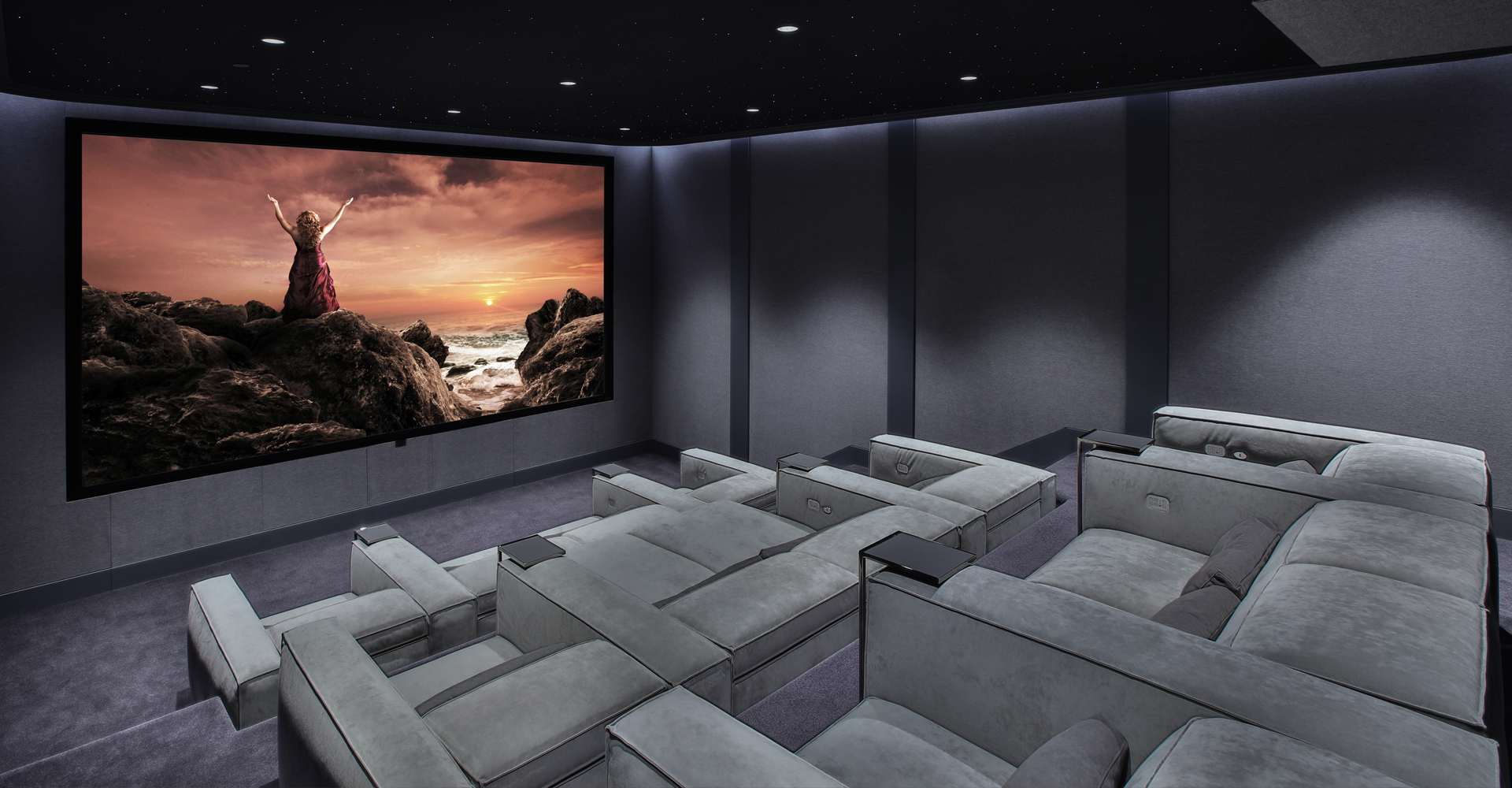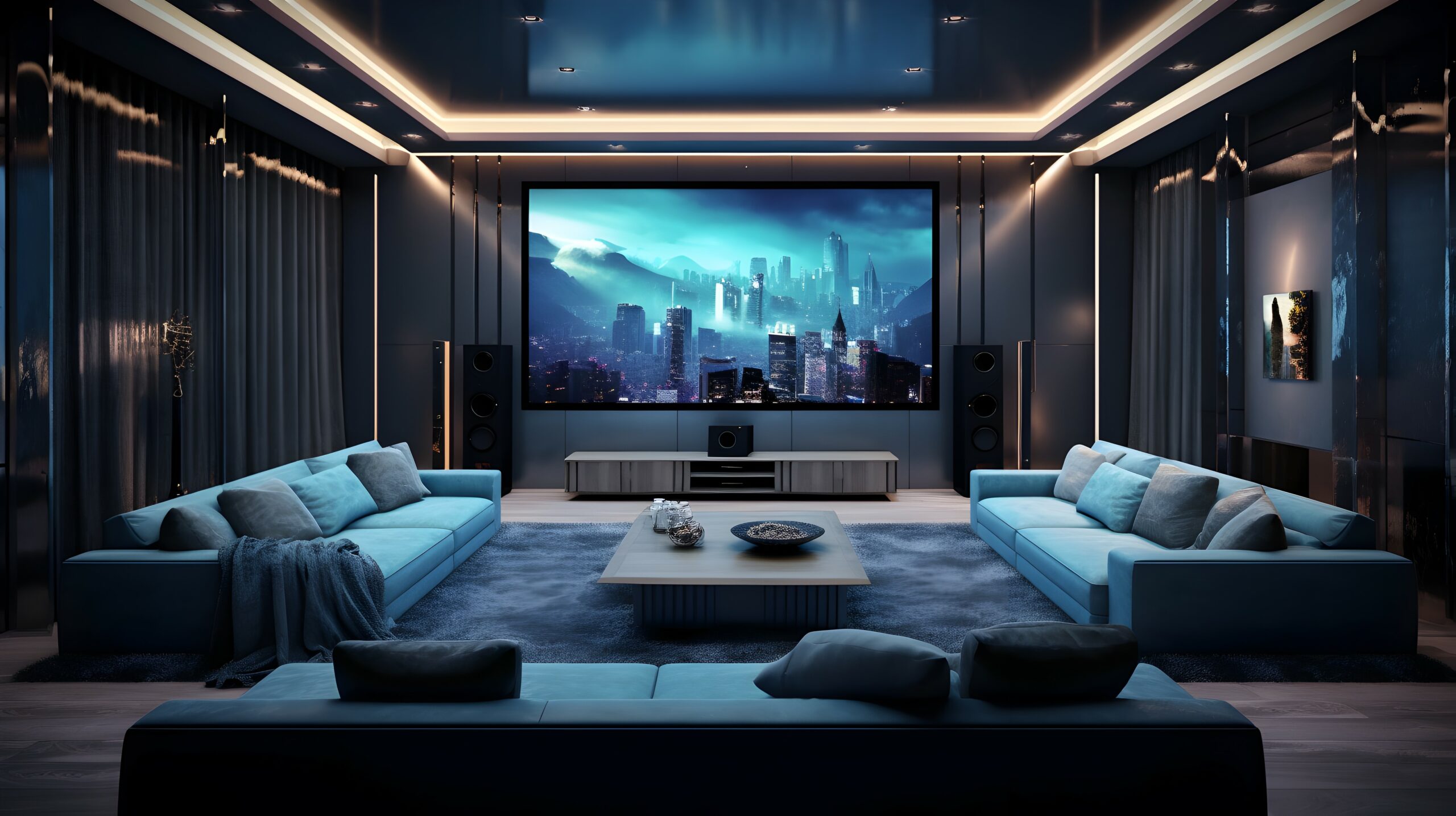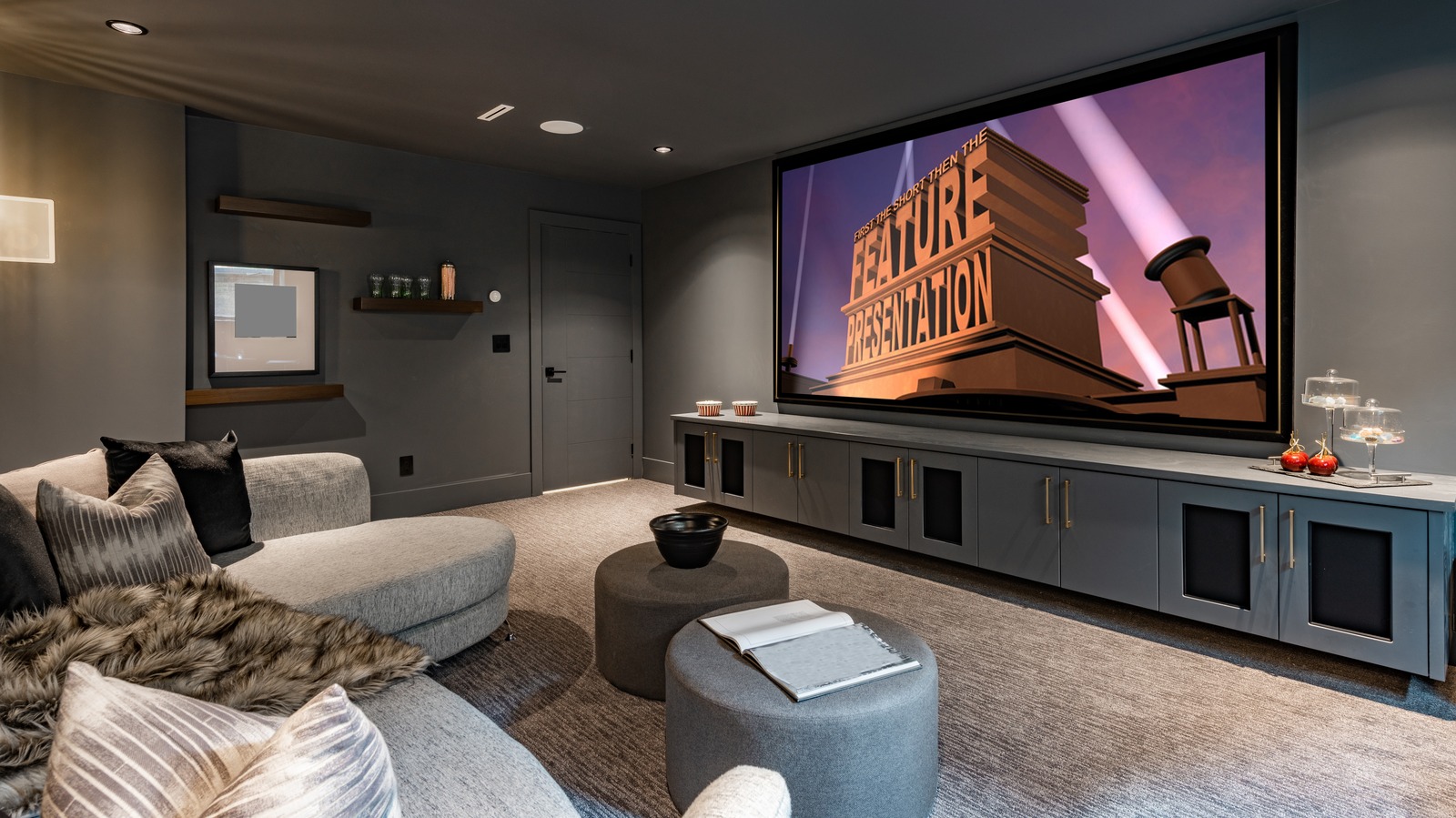Home Theater 101: Everything You Required to Know for a Motion Picture Experience at Home
Producing a home movie theater that matches the cinematic experience of a business theater includes careful consideration of multiple components, consisting of display choice, sound systems, and area design. Whether you are considering the optimal screen size or the intricacies of border noise, understanding these fundamentals is crucial.
Picking the Right Screen
When setting up a home theater, picking the ideal screen can make or break the seeing experience - home theater installation tampa. The screen works as the centerpiece of your arrangement, affecting picture top quality, checking out angles, and overall visual. Secret factors to think about include screen size, kind, and resolution
Initially, identify the suitable screen dimension based on your area measurements and seating distance. A basic guideline is to rest approximately 1.5 to 2.5 times the angled screen dimension for optimal watching. Next, select in between numerous screen kinds, such as fixed-frame, mechanized, or retractable displays, each offering unique benefits. Fixed-frame screens typically provide the most effective image high quality, while mechanized alternatives permit adaptability precede use.
Resolution is another essential aspect. For a genuinely immersive experience, think about a screen made for 4K and even 8K content, guaranteeing sharpness and clearness. Additionally, think about the display's gain, which impacts brightness and comparison; a greater gain can improve illumination in well-lit rooms, while a lower gain may be a lot more ideal for darker atmospheres.
Choosing Audio Equipment
Audio equipment is a crucial part of any type of home movie theater system, substantially boosting the overall viewing experience. The selection of audio equipment can determine the deepness, clarity, and immersion of sound, essential for producing a cinematic environment.
When picking audio devices, think about a surround audio system, which typically includes a receiver, multiple audio speakers, and a subwoofer. A 5.1 or 7.1 network system is suggested, where the very first number represents the audio speakers and the second the speaker, offering an immersive soundscape. The receiver is the heart of the system, handling audio and video clip signals, and ought to support modern-day layouts like Dolby Atmos for an improved spatial experience.
Quality speakers are important; seek versions that provide a well balanced noise account with excellent bass action. Floor-standing speakers can create richer noise, while shelf choices conserve area. Additionally, take into consideration cordless options for ease of installment, although wired systems frequently deliver superior efficiency.

Ideal Seating Arrangements
Developing an excellent home movie theater experience pivots substantially on optimum seating arrangements. The plan of seats plays an important function in both comfort and watching high quality, straight influencing the total motion picture experience.
First, take into consideration the display dimension and watching range. A common standard is to place seats at a range approximately 1.5 to 2.5 times the angled dimension of the screen. This makes sure an immersive experience without straining the eyes.
Next, altitude is vital. The back rows must be higher than the front to prevent blockages if your seating is in a tiered style. For level seats, ensure that the front row is not as well close to the display, and that everyone has a clear view.
In addition, consider the arrangement in regards to social characteristics. Team seating can boost the communal experience, while individual seats may be preferred for individual viewing.

Lastly, focus on comfort with ergonomic seating that supports prolonged watching durations. Integrating recliners or cushioned seats can substantially improve the experience, making the home cinema a preferred location for both amusement and relaxation.
Lighting and Atmosphere
Effective lights and atmosphere are necessary elements of a well-designed home theater, as they significantly influence the seeing experience. The ideal lights can improve the cinematic feel, while poor options can diminish it. For optimum outcomes, consider a split lights strategy that consists of ambient, job, and accent lighting.
Ambient lights offers basic lighting, making certain that the space is not completely dark, which can strain the eyes. Dimmer switches are highly advised, allowing for changes based on the web content being checked out. Task lights, such as wall surface sconces or flooring lamps, supplies practical illumination for tasks like analysis or browsing the room without interfering with the general environment.
Accent lights can be made use of to highlight building functions or develop prime focus, including deepness and passion to the room. LED strip lights behind screens or along shelves can provide a subtle radiance that enhances the visual experience without overwhelming the viewer.

Wiring and Installation Tips
A well-planned electrical wiring setup is essential for attaining optimum efficiency in your house theater system. Proper electrical wiring not just guarantees top notch sound and video clip signals yet additionally boosts the general visual of your area. Begin by drawing up your design, recognizing where each part will be positioned, including your screen, audio speakers, and receiver.
When picking wires, focus on top notch, suitably evaluated circuitry to decrease signal loss. HDMI cable televisions ought to be made use of for video links, while speaker wire ought to match the specs of your audio speakers and amplifier. Go with in-wall ranked wires to adhere to security criteria and keep a clean look.

Conclusion
In recap, creating a remarkable home theater experience needs careful consideration of different elements, including screen selection, audio devices, seating setups, illumination, and circuitry. By focusing on these aspects, a motion picture ambience can be successfully reproduced, enabling for immersive checking out experiences that measure up to traditional cinema settings.
Creating a home theater that matches the motion picture experience of a commercial theater involves mindful factor to consider of multiple parts, including display choice, audio systems, and room format.When setting up a home theater, choosing the best screen can make or damage the watching experience. Next off, pick in between various display types, such as fixed-frame, motorized, or retractable screens, each offering distinctive benefits. For a really immersive experience, take into consideration a screen created for 4K or also 8K web content, guaranteeing intensity and quality.In recap, creating an exceptional home cinema experience requires careful factor to consider of different components, consisting of screen option, audio devices, seating arrangements, lights, and wiring.